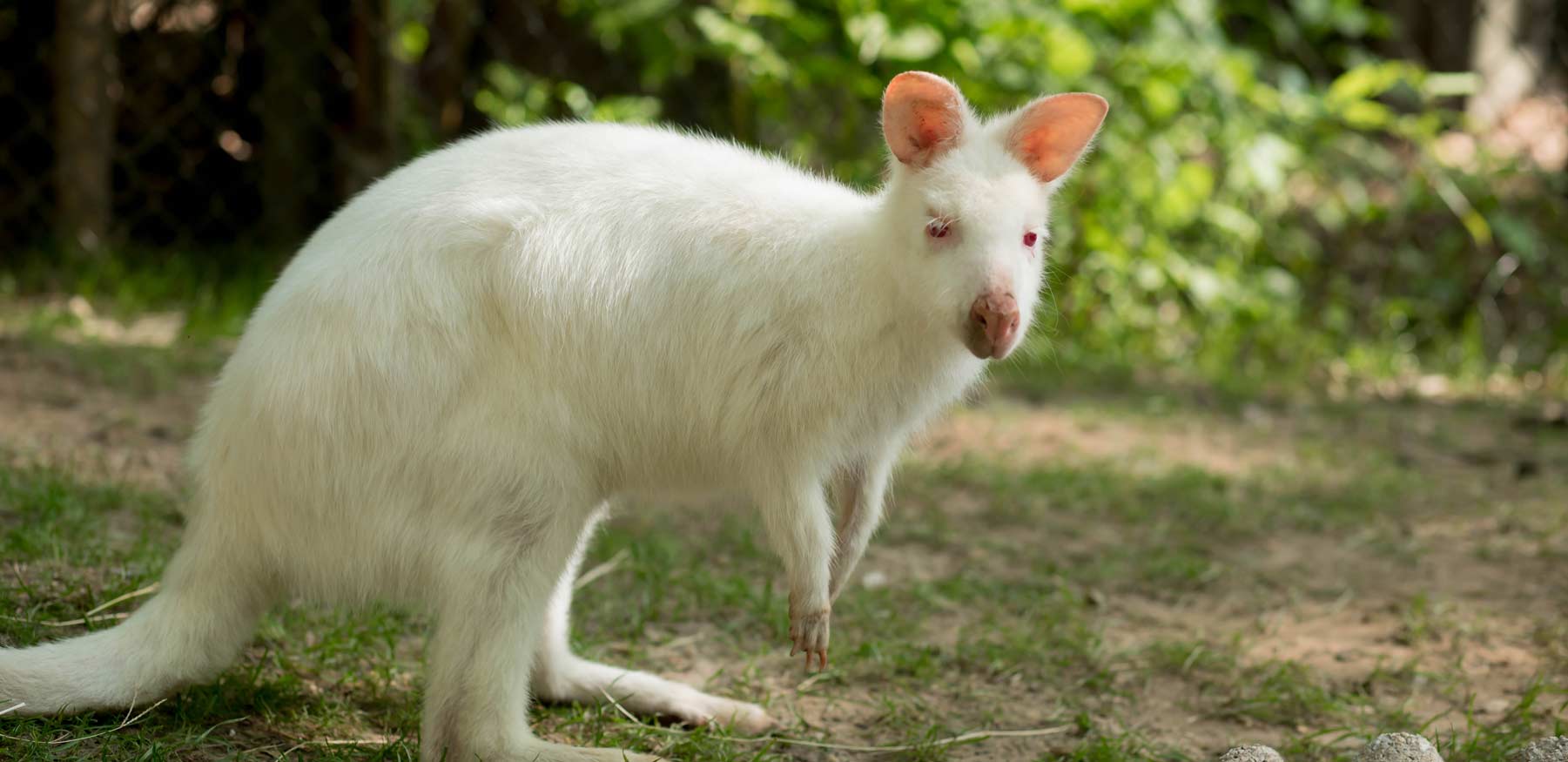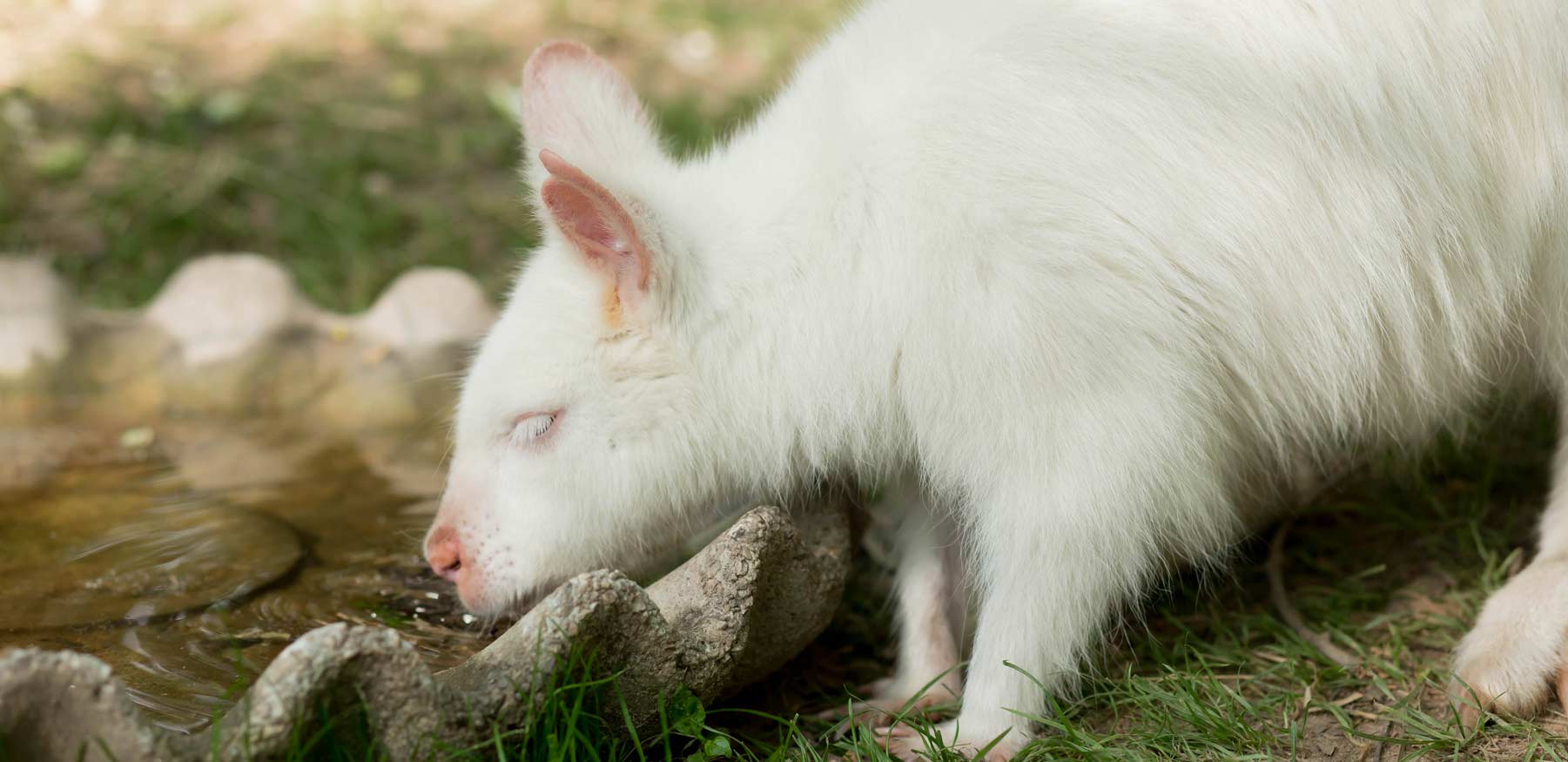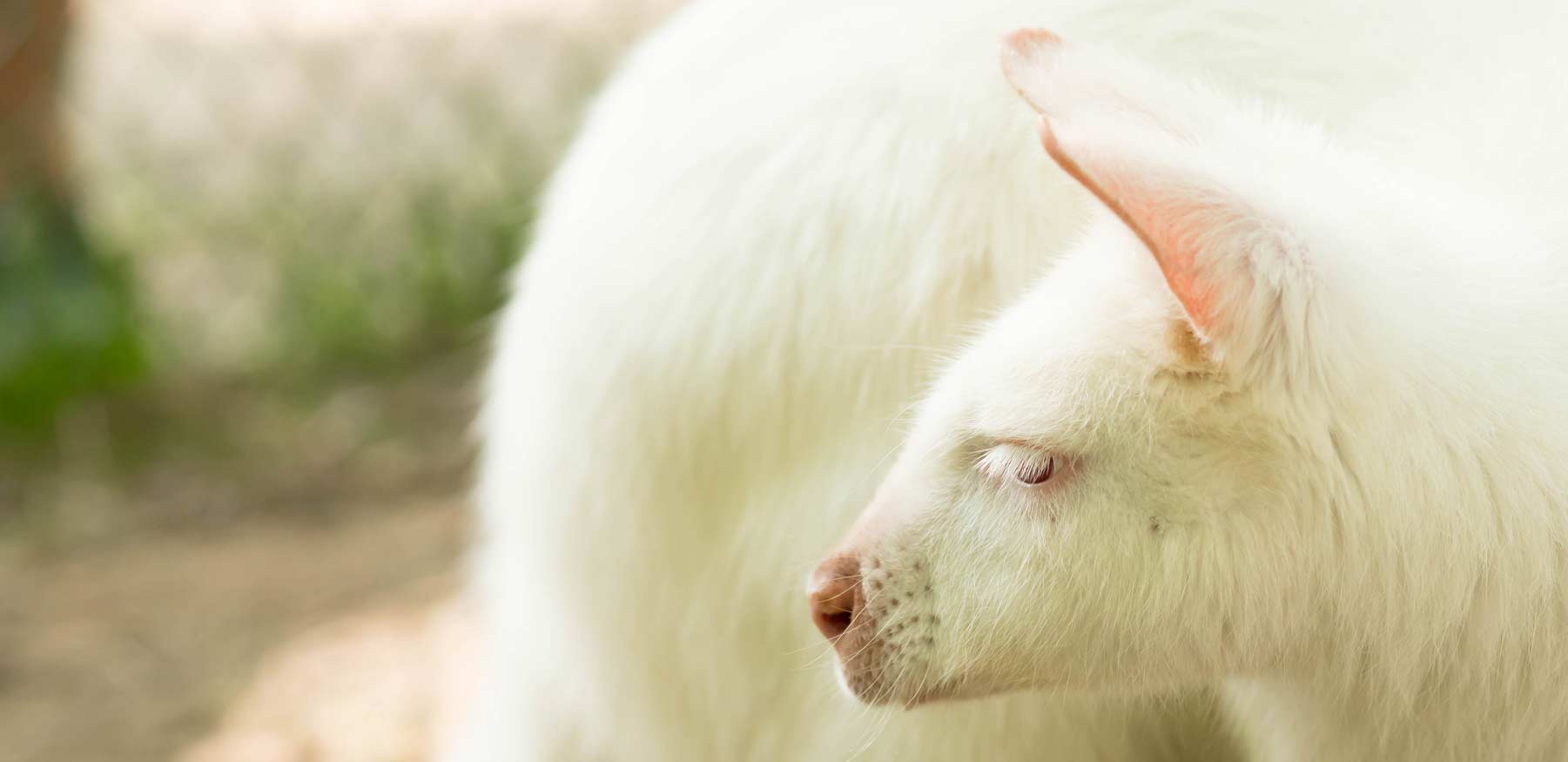
BENNETT'S WALLABY
Smaller than a kangaroo, these wallabies are typically tawny-grey. They are most active at dusk and dawn but are categorized as nocturnal.
PROFILE
Sasquatch (“Sassy”) was born at Yellow River Wildlife Sanctuary in late 2020. She officially left her pouch in June of 2021. She is an Albino wallaby. Abominable was also born here, in 2021, leaving his pouch in May 2022. He is our strong, handsome, brown wallaby.
OVERVIEW
CONSERVATION STATUS
Least Concern
AVERAGE SIZE
Compared to a 6′ Man
AVERAGE WEIGHT
30 – 41 lbs
AVERAGE LIFESPAN
9 Years
DIET
Herbivore
REGIONS
Australia
Native to the eastern coast of Australia, Bennett’s wallabies have been introduced into the wilds of New Zealand, England, Scotland, Ireland, France, and the Isle of Man. There is a significant population on the island of Tasmania.
APPEARANCE
Smaller than kangaroos, Bennett’s wallabies stand 2 to 3 feet tall. They can weigh 30 to 40 pounds when fully grown, males being larger than females. Like kangaroos, wallabies have very long feet. Their hind legs have just three toes, the center one being the longest. Hopping is their most efficient mode of travel. Very powerful legs and a tapered, long tail (which aids in balance) allow them to move at speeds greater than 9 miles per hour.
Bennett’s wallabies have very soft tan to light grey fur with a lighter chest and belly. Their muzzle, paws, and feet tend to be darker. They are also known as the “red-necked wallaby” because of the reddish fur across their neck and shoulders. Wallabies with no coloring (white fur) and red eyes are albino. Their large ears can move 180 degrees independently, providing them exceptional hearing. Like all marsupials, females have a pouch, where their young do the majority of developing.



CHARACTERISTICS
A crepuscular species, they are most active at twilight and spend their days relaxing. They can be found grazing on grasses and herbs, as well as roots, during dry spells. Bennett’s wallabies are commonly found in eucalyptus forests. A solitary animal, they may be found in groups to feed.
Breeding season finds females approaching males; she may even lick his neck. The two will actually engage in a fight which will quickly end allowing them to mate. After only a month, a very tiny “joey” is born barely strong enough to climb into his mother’s pouch. There he will eat, sleep, and grow for the next 9 months. Wallabies, like ring-tailed lemurs, engage in alloparental care, providing the mother a rest or the chance to gather food.


